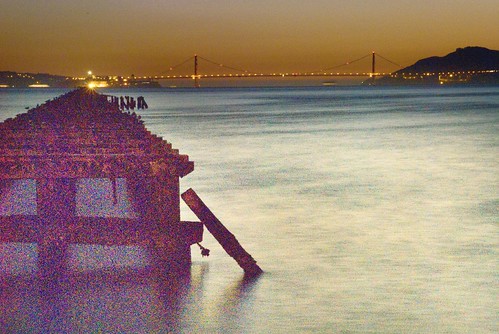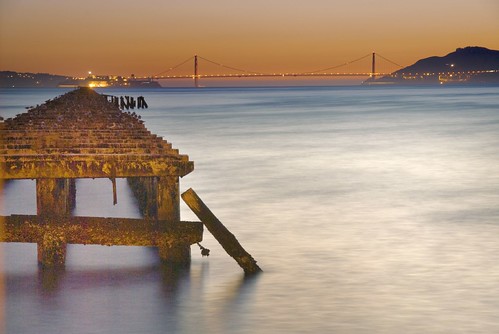How high can you go? How low can you go? At least when the question is ISO…the answer depends on your hardware. In the case of my Nikon D200, high ISO (shown below) means ISO 1600. Low ISO (far below) means ISO 100, so there’s a 16 times difference in the amount of light being captured due to the sensitivity settings in the two photos, which were taken one after the other and post-processed in exactly the same way.
View this image larger.
It’s important to understand that by increasing the ISO you are not really increasing a sensor’s ability to capture light, but rather just amplifying the signal with all the negative implications for Signal to Noise Ratio you might expect.
As a practical matter, bear in mind that noise shows more in dark areas than light areas (witness the lower left of the high noise version of this photo). The implication: in long exposure time and/or high ISO situations, where you know there will be plenty of noise, try to expose so dark areas don’t go really dark (at least if this doesn’t mean blowing out highlights).
View this image larger.
[Both images:142.5mm in 35mm terms, tripod mounted. High ISO version: 20 seconds at f/36 and ISO 1600; Low ISO version 30 seconds at f/11 and ISO 100.]


ryan
18 Oct 2007Harold,
First… I rarely reply to a blog for which I do not know the person; however your blog is VERY nice, well written and your photography is pure art and wonderfully captivating and beautiful.
I found your site via google search while trying to find out how to take extreme close-up shots. ( searched: “how to photo extreme close-ups”).
Your post of water drop photos quickly and to the point helped me to understand what is needed/involved for take close-ups. I did not realize “macro” was for close-up shots… should it be called “micro?” Seems like everything is Photograghy is backwards. :o)
BTW.. I have purchased a few book on photography and I always end of frustrated. I think it is because I feel as though I am being talked down to, instead of taught. After reading several more of your post, you have a talent for explaining you methods that is easy to read and understand and apply to situations in the real world. You, Harold, should write your own “how-to” books.
I love your photos! Awesome work. Great blog!
Thanks
-=Ryan
Pingback: Photoblog 2.0: » Photoblog 2.0 Archive: » Boy in a Box
Pingback: Photoblog 2.0: » Photoblog 2.0 Archive: » Zion Canyon at Night